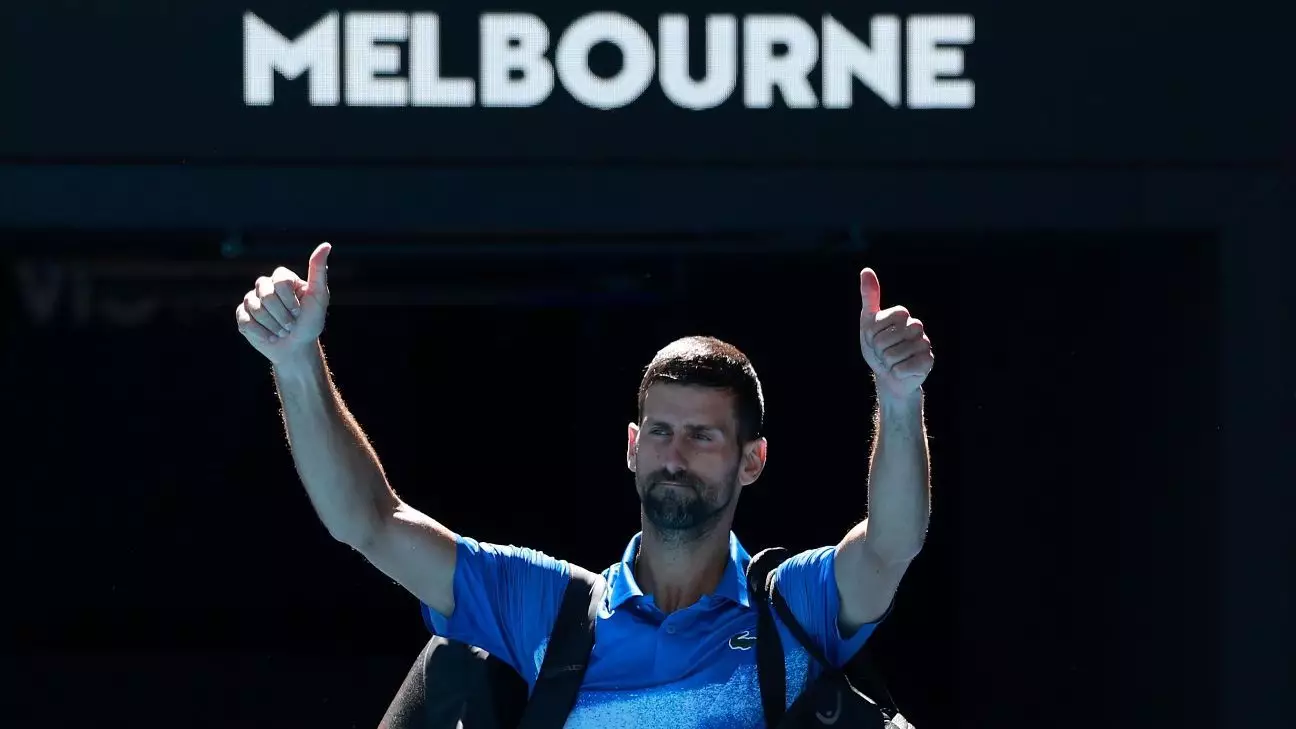Novak Djokovic’s recent performance at the Australian Open, where he was forced to retire early in the semifinals against Alexander Zverev, has stirred significant discussion among fans and commentators alike. His premature exit, which occurred after just one set, has drawn a mixed response, notably a chorus of boos from the audience. This incident highlights not only the physical toll of competitive tennis but also the emotional drain that professional athletes encounter, especially during high-stakes matches.
Djokovic’s announcement came after he shared an MRI scan of his injured left hamstring on social media, accompanied by a pointed remark aimed at critics who might undermine the complexities of sports injuries. This social media post did little to quell the ongoing speculation, as the absence of a detailed prognosis only fueled further questions about his health and future competition plans. The ambiguity surrounding his injury reflects a broader issue within the world of elite sports, where transparency and communication can often be overshadowed by immediate public sentiment.
The reaction of the crowd at Rod Laver Arena serves as a poignant reminder of the expectations placed upon professional athletes. Fans, having invested emotionally and financially in the spectacle of the match, naturally desire to see their heroes perform at their peak. Zverev’s defense of Djokovic following the match underscores a crucial aspect of sports culture: the need for empathy towards athletes who are laboring under immense pressure both physically and mentally. His defense highlights that while fans yearn for entertainment, they should also recognize the human element involved in these performances.
In a sport where certain figures like Djokovic have set extraordinary standards through years of dedication and excellence, the momentary failure to deliver can lead to harsh judgment. This situation presents a dilemma; while fans desire thrilling matches, athletes are often battling unseen injuries that can detract from their capabilities. The challenge for players like Djokovic is managing their own health while striving to meet the astronomical expectations set by both themselves and their audiences.
Djokovic’s injury woes illustrate a broader narrative in professional sports, specifically regarding the psychological weight athletes carry. The need to “push through” injuries can lead to feelings of inadequacy, especially when failing to achieve desired results. Djokovic’s admission of feeling “more and more pain” as his recent match progressed not only reveals the physical strain but also resonates with the internal conflict elite athletes often face between competitive spirit and self-care.
In the aftermath of this event, the discourse surrounding sports injuries is more critical than ever. The culture of demanding resilience can sometimes push athletes to neglect their well-being, causing long-term repercussions that are often overlooked. As Djokovic recovers, the tennis community should engage in deeper conversations about how to support athletes in their dual battle against physical limitations and public expectation.
Ultimately, Djokovic’s recent ordeal at the Australian Open is a vivid illustration of the precarious balance between athletic excellence and physical reality. As he navigates his recovery, the sports community must cultivate a more nuanced understanding of athletes’ challenges. Beyond the cheers and jeers of the crowd lies the stark reality that even sporting legends can falter when faced with the frailties of the human body. In an era where the performance and mental health of athletes are under a microscope, it is crucial to foster an environment that prioritizes their well-being alongside the excitement of competition.


Leave a Reply